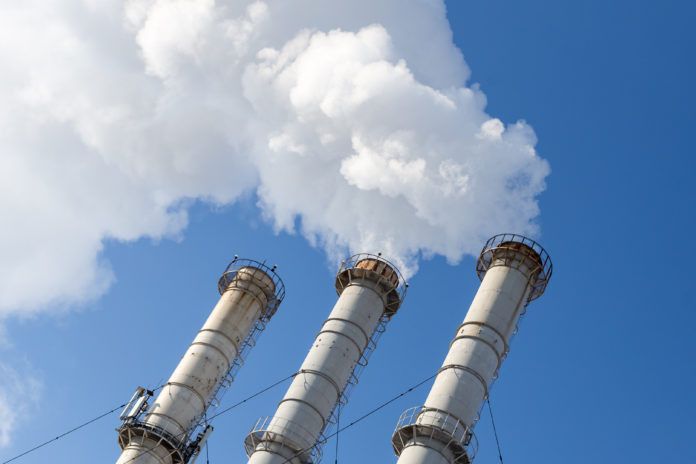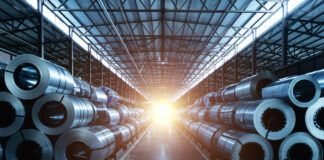Have you ever heard someone ask one or both of these questions? Did you feel equipped to discuss the issues, or did you dodge the conversation?

Most people working in industry enjoy the prosperity that their jobs have brought to them and their families; however, when people claim that industrial jobs are unsafe or that industry is harming our environment, some might wonder whether there’s any merit to these claims.
Although the vocal few are able to cause people to pause and question, the data does not support their claims.
When it comes to safe jobs, industrial plant, maintenance and construction work fare better than working in many service jobs. The Greater Baton Rouge Industry Alliance recently celebrated achievements in the safety of industrial plants and contractors along the 10/12 corridor with our 23rd Annual Safety Excellence Awards.
This year’s nominees represented the work of 137,000 employees who worked 318 million hours during 2018. Their Total Recordable Incident Rate (TRIR) was 0.22, which is a remarkable achievement. The TRIR number measures the number of people who sustain a nonfatal injury among 200,000 hours worked.
In 2017 (the latest information available from OSHA), Louisiana chemical plants and refineries averaged a 0.6 and private construction a 1.2. As a comparison, the arts and leisure industry had a 5.6, hospitals a 3.6 and government construction a 4.8.
A review of private industry fatalities shows that goods producing jobs had 39 fatalities and service providing jobs had 67 fatalities in 2017. The category of “goods producing” reports zero fatalities for manufacturing and 23 in construction (all construction, industrial is not broken out).
So, how does this industry achieve such a record? Sharing best practices and tackling common issues through GBRIA and other associations is a hallmark of this industry.
However, it is each company and each employee’s attitude and focus on safety that makes the difference.
Companies expend incredible resources to ensure that employees meet daily, complete Job Safety Analyses, Hazard Analyses, and training upon training in every aspect of hazards possible and how to avoid injury. Companies have pep rallies for safety and are unrelenting in convincing employees that ZERO incidents is an achievable goal.
The communities in which industrial facilities are located also fare well in health outcomes.
For example, in looking at the 2019 County Health Rankings Key Findings Report at countyhealthrankings.org, it’s clear that overall health outcomes in industrial parishes fare better than rural parishes. Northeast Louisiana’s rural parishes fare the worst in these health rankings.
The Louisiana Department of Health’s Annual Health Report Card for 2017 shows that cancer incidence rates are often lower in industrial parishes than rural parishes.
Many rural parishes in North Louisiana have low cancer incidence, but many rural parishes of coastal Louisiana have the highest rates. This is almost opposite their overall health rankings. Contradicting and puzzling, isn’t it?
In the 2019 County Health Rankings Key Findings Report, Ascension Parish, where there are over 30 industrial sites, ranked second-best parish in the state for its health outcomes in 2018. St. Charles Parish, which also has a large concentration of plants, achieved the rank of sixth best.
Although I’m no health scientist, I know that there are many factors contributing to cancer and overall health outcomes. I believe that the presence of industrial plants seems to have more positive effects on health than negative effects.
Have you ever heard of an industrial hygienist? These are scientists and engineers committed to protecting the health and safety of people in the workplace and the community (visit aiha.org).
One of the duties of industrial hygienists at industrial facilities is to place monitoring equipment on employees at regular intervals to test for any chemicals that could cause a health issue. If plants were emitting amounts that caused problems for people, their own employees would be identified first.
Don’t you think that if industrial employees, who go into plants every day for years upon years, were getting diseases at a rate greater than the general population, someone would have noticed? In fact, employee data actually has been used to identify problems, and industry has self-disclosed to protect others.
One could say that the communities on the fence lines of industrial facilities are protected by the thousands of employees, suppliers and contractors working inside Louisiana plants every day because the employees provide the data to show that exposure to what is being manufactured is safe.
The fact that cancer rates in St. Charles and St. John parishes fall in the lowest incidence category but also have significant numbers of industrial facilities located there should give pause to people critical of industrial growth in this area.
Some of the other heavily industrial parishes such as Ascension, East Baton Rouge and Calcasieu have the next lowest rates.
In addition to providing good jobs, industrial companies do much to support and invest in the communities in which they locate.
From whooping crane reintroduction, to Certified Wildlife Habitats, and thriving cattle herds and farming on plant property, the land and wildlife next to plants is thriving.
Industrial companies sponsor many United Way programs, community health and wellness fairs, festivals, music groups, schools and much more as a means to ensure that people in their communities thrive as well.
Maybe it’s my “rose colored glasses” or the statistics I’m reading, but it seems to me whether it’s health and wellness outcomes, sales and property taxes, or other factors that make a community thrive, the presence of industrial facilities seems to improve the quality of life, much to the chagrin of the vocal few who try to use false claims and fear to convince us otherwise.
Connie P. Fabré is the executive director of the Greater Baton Rouge Industry Alliance Inc.









